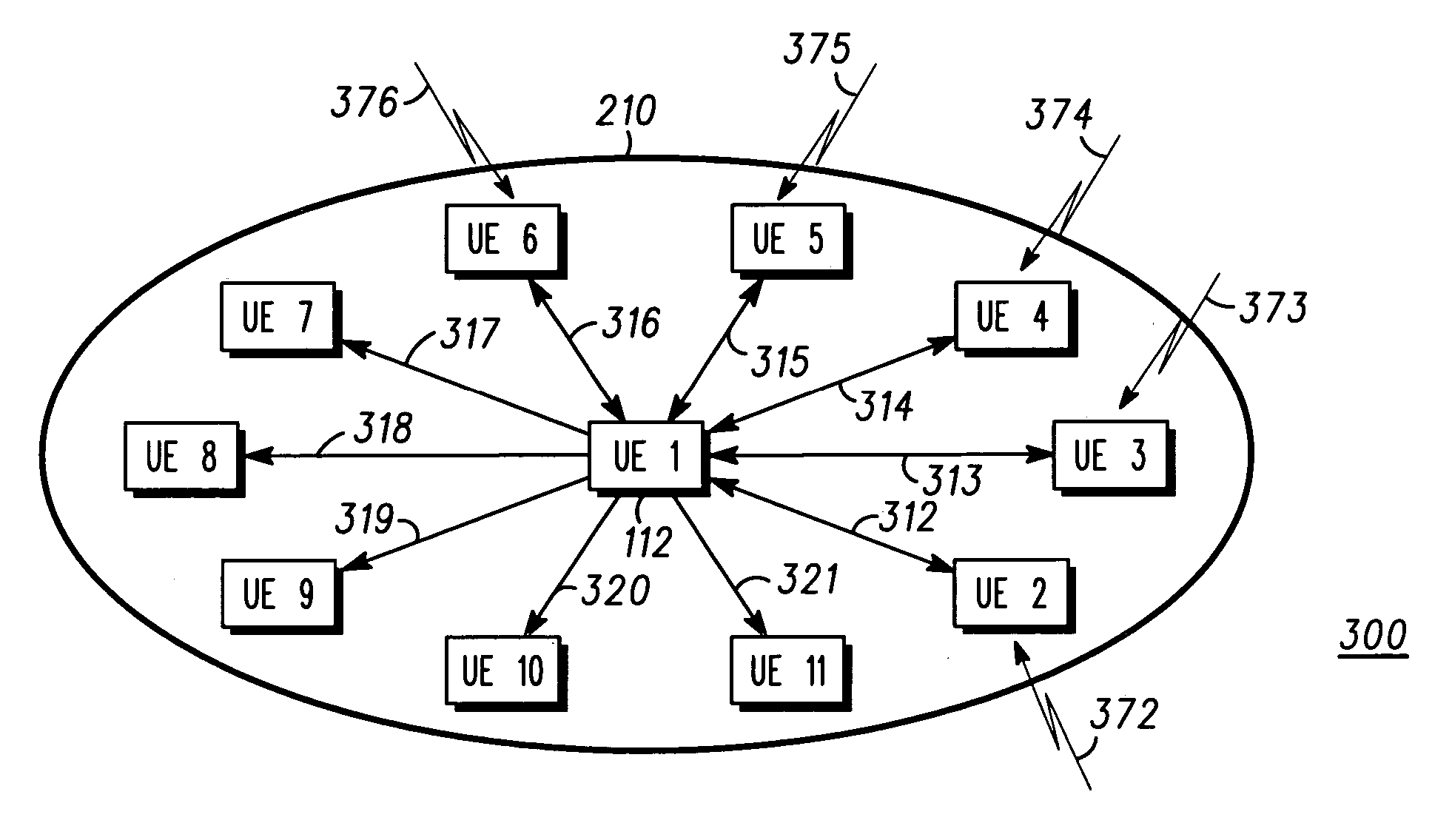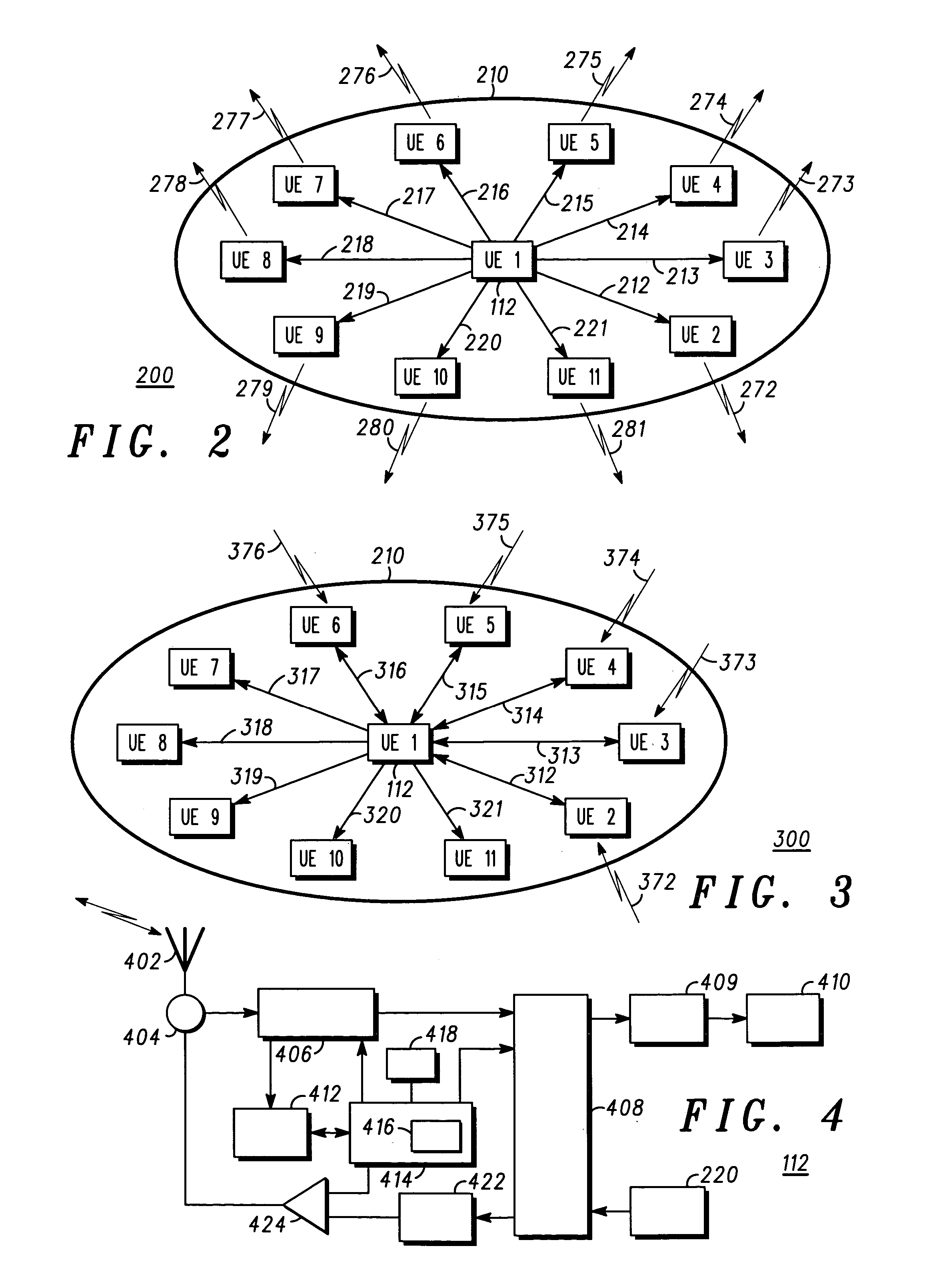Method for enhancing the communication capability in a wireless telecommunication system
a wireless telecommunication system and communication capability technology, applied in the field of wireless telecommunications system enhancement, can solve the problems of radio transmission subjected to rayleigh fading, multipath and other noise-inducing effects, and known to be very time-dependent, and achieve the effect of enhancing functionality
- Summary
- Abstract
- Description
- Claims
- Application Information
AI Technical Summary
Benefits of technology
Problems solved by technology
Method used
Image
Examples
embodiment 1
[0055]Referring now to FIG. 2, a diagram of an uplink communication configuration 200, for example a configuration of a plurality of user equipment (UE) of FIG. 1 is shown, the configuration being adapted to support the inventive concepts of a first embodiment of the present invention. In accordance with the first embodiment of the present invention, a UE, say UE-1112 wishes to initiate an enhanced functionality mode of operation. Such enhanced functionalities may include a desire to send a large amount of data, or high priority data such as an emergency call that is needed to be received in a short period of time, or poor signal quality conditions. Such a transmission will occur on uplink channels.
[0056]In order to initiate the enhanced functionality mode of operation, UE-1112 sets itself up as the ‘master’ communication unit in the first embodiment, in order to control the communication with the other UEs (UEs 2–11) that it uses for its uplink communication.
[0057]As shown in FIG. ...
embodiment 2
[0062]In accordance with a second embodiment of the present invention, a group of independent wireless devices are identified and coordinated (aggregated) using, for example in a wireless domain a short-range wireless system such as provided in the adjunct Bluetooth system.
[0063]By forming a ‘dynamic’ group based on proximal location via a short-range adjunct bluetooth system, any of the users UEs 1–11 may then benefit from using the capabilities of one or more of the other subscriber units within the group. This is in contrast to the first embodiment where a particular UE dynamically sets up a group to operate in a master-slave configuration for one or more specific tasks.
[0064]The provision, in the second embodiment, of such a larger communication “pipe” for use by any of the UEs in a group leads to, inter-alia, increased efficiency, for example, using a higher peak data-rate over the air interface for a packet data transmission.
[0065]A group of proximal users can co-operate for a...
embodiment 3
Emergency Call
[0076]In a yet further embodiment of the present invention, a further enhanced uplink application is provided. A large number of remote communication units now offer emergency call facilities, namely the ability to make a high priority call to a central receiving station. Examples of emergency calls include a call to the Emergency services in the case of say a cellular phone, or a call to the dispatcher in the case of a mobile radio.
[0077]The inventors of the present invention have recognised a further functionality enhancing operation in the re-use of selected (or random) neighboring UEs for emergency calls. As an example, let us consider the case when the user of the UE wishes to make an emergency call. However, the UE may not be within coverage range, say, of its serving Node B, and therefore it is unable to contact the network.
[0078]The inventors of the present invention have envisaged that the user / UE could request other selected or random neighboring UEs to set u...
PUM
 Login to View More
Login to View More Abstract
Description
Claims
Application Information
 Login to View More
Login to View More - R&D
- Intellectual Property
- Life Sciences
- Materials
- Tech Scout
- Unparalleled Data Quality
- Higher Quality Content
- 60% Fewer Hallucinations
Browse by: Latest US Patents, China's latest patents, Technical Efficacy Thesaurus, Application Domain, Technology Topic, Popular Technical Reports.
© 2025 PatSnap. All rights reserved.Legal|Privacy policy|Modern Slavery Act Transparency Statement|Sitemap|About US| Contact US: help@patsnap.com



